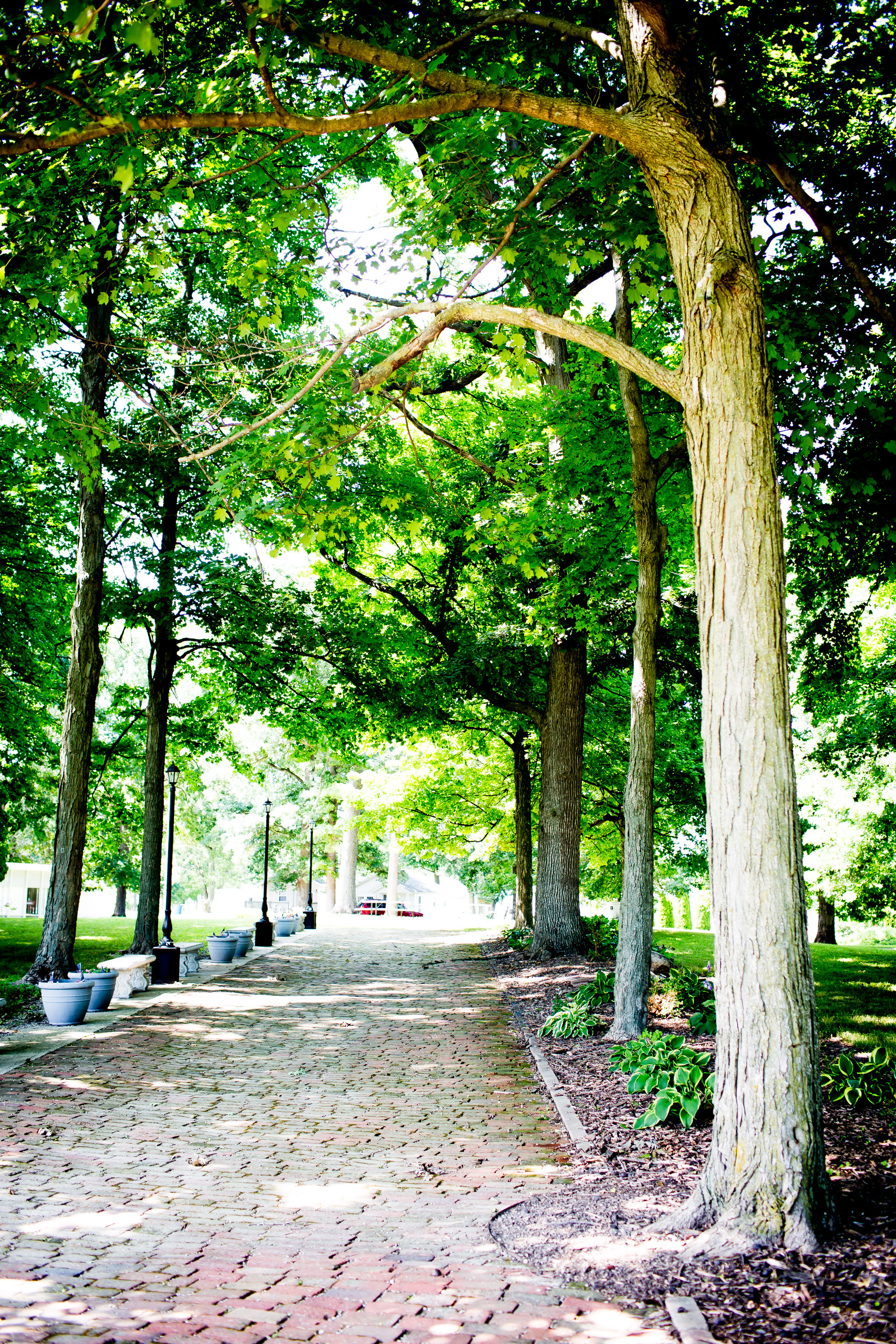Tending Trees
He was a young man at the time, probably in his early 20’s, though we’re not sure exactly. It’s undetermined if the start of the life he buried was a seedling or a sapling. All I’ve been told is that he helped plant trees: trees to provide shade for a campground where he believed his children would one day grow up. He would be an old man before he could enjoy their laden foliage. He planted them, not for himself, but for those who would follow him.
Grandpa’s dead now, but the trees aren’t. He planted something that would outlive him. Probably the majority of the people who walk on the Frankfort Campground think little of the trees. They stood staunchly there before the visitors arrived, the oaks will remain reverent after the people leave. Those standing in the trees’ shadows are indifferent to the hands that once planted them, to the vision of the man who once stood on the soil where no trees grew.
The trees have changed with time — reaching higher, spreading wider, connecting current generations with generations long gone. But trees are work: they’re a nuisance to those mowing, they dig their roots into water lines, the deciduous ones drop their leaves and someone has to come along and rake the vibrant leaves into piles, branches have to be collected from the yard after thunderstorms. Sometimes it seems simpler to spend a day cutting one down then to invest a lifetime tending to its conservation.
I understand that trees retain moisture and rot. And sometimes perfectly good trees must be traded for a new structure or establishment. I’m not so naive that I’m unaware that progress has to be paid for. But I’m also disheartened when I watch trees that our fathers and grandfathers once planted and watered and stabilized — trees that were once sprouting seeds and flimsy saplings that have grown to be what our forebears envisioned them to be and gave their lives for them to become — I’m alarmed when these trees are stripped of their bark or allowed to drown in their moisture or thoughtlessly hacked down with little regard for why they were planted in the first place.
Not many weeks ago some of our family and friends were enjoying time together at our house. I went outside to check on a yard full of a rowdy kiddos. To my horror I saw these thick, leafy-green branches strewn all over the yard. I watched a couple of the boys hastily chopping branch after branch from our ash tree. With a pair of borrowed sheers from the mini-barn they were removing as many branches as they could in a very short time. I never did discover the purpose of this destruction (maybe they were planning a belated Palm Sunday celebration?). They didn’t understand the price of the plant they were sabotaging. They weren’t the ones who’d planted it, watered it, and guarded it. They didn’t know its history: how it was planted by our church family as a pastor appreciation project, the story of it being attacked by Ash Borers, the time it received a fatal blow during a thunderstorm. In their ignorance they carelessly cut away what had been circumspectly cultivated by another.
I spent last week on a campground far removed from the one where my grandfather planted trees. Late the other night I walked among tall oaks that were planted by hands decades before my time. As my feet pressed acorns to the ground and my steps fell over last autumn’s foliage, I prayed for those whose spirits are slumbering in an apathetic lethargy to be awakened. I cried for the hearts of those heavy with distractions to be roused to life again. My heart echoed the entreaty of the Dryad in C. S. Lewis’s The Last Battle who implored King Tirian for the life of the trees: “Woe, woe, woe! Woe for my brothers and sisters! Woe for the holy trees! The woods are laid waste. The axe is loosed against us. We are being felled. Great trees are falling, falling, falling. Justice, Lord King! Come to our aid. Protect your people. They are felling us in Lantern Waste. Forty great trunks of my brothers and sisters are already on the ground” (Lewis, p. 20).
One only has to do a little research to find the accounts of Douglas firs, many 350 feet or taller, that grew in thick numbers where Seattle and Vancouver, B.C. now bustle and advance. The most startling of these accounts was a 465-foot fir, christened by the Seattle Times as the “Nooksack Giant.” If the measurements cited by multiple sources are correct, “the Nooksack Giant likely was one of the tallest trees, of any kind, ever found.” The fir was thoughtlessly logged in 1897. By tree standards, it was still young (only about 480 years old). In retrospect, it’s easy to judge the shortsightedness of the men who wielded crosscut saws and with the removal of the giant, erased a monumental bridge to the past. We can be quick to criticize those who couldn’t see the importance of protecting these legends.
Grandpa’s gone, but the trees he planted continue to grow. I look at the other seeds he planted, other forms of life he watered: the little church he built that I claim as my own, the souls he loved, the people he lived for. I’m watering trees that were here before I thought to climb them, that will remain long after I cease to sit in their shade. I pray that I will always see past the present push for progress and growth and development to a generation yet unborn who will one day stand where I stand. It is my hope that they will value the life that I am now inculcating, that they will treasure the trees that I am tending.
“The lines have fallen for me in pleasant places;
indeed, I have a beautiful inheritance.”
Images courtesy of Jonelle Hill with Backyard Studios.
Sources:
Krulwich, R. (2011). The world's tallest tree is hiding somewhere in California. National Public Radio. 8 April 2011. Retrieved on 10 July 2018 from: https://www.npr.org/sections/krulwich/2011/04/08/135206497/the-worlds-tallest-tree-is-hiding-somewhere-in-california
Lewis, C. S. (1956). The Last Battle. New York: HarperCollins Publishers.
N. A. (2011). Giant logged long ago but not forgotten. The Seattle Times. 4 Sept. 2011. Retrieved on 10 July 2018 from: https://www.seattletimes.com/life/giant-logged-long-ago-but-not-forgotten/.








